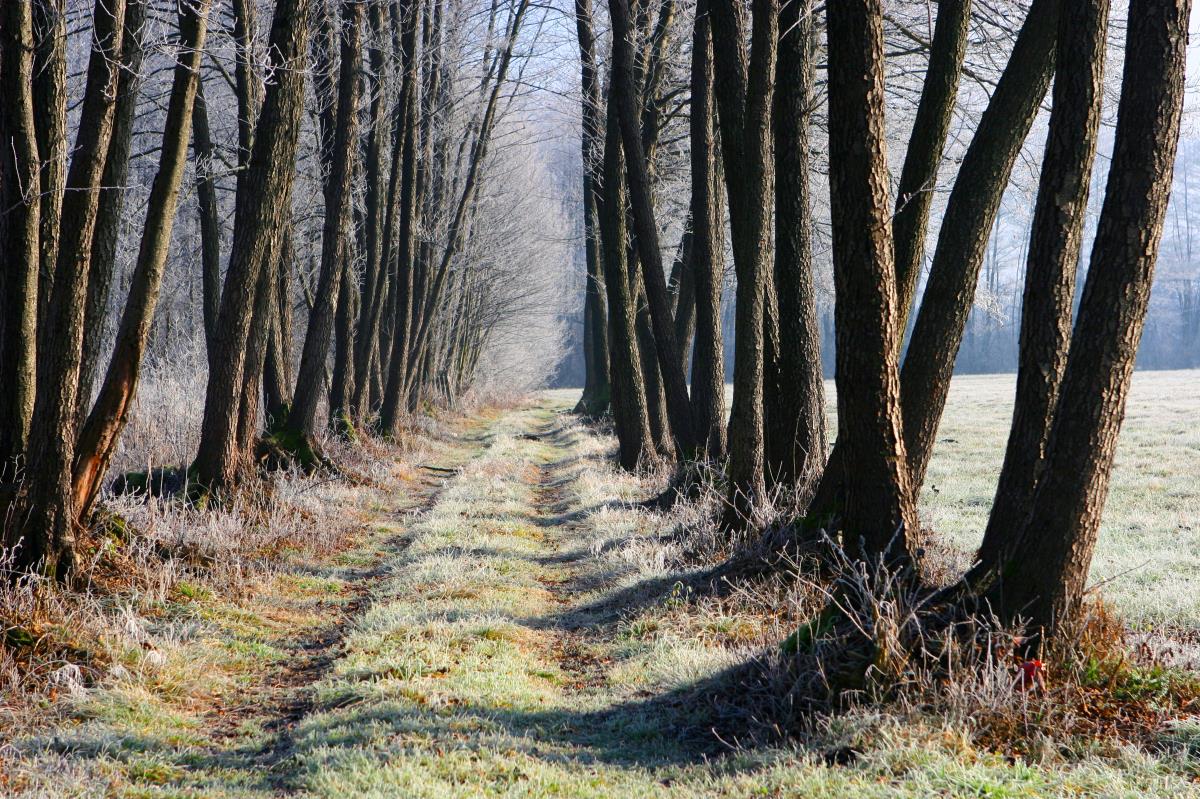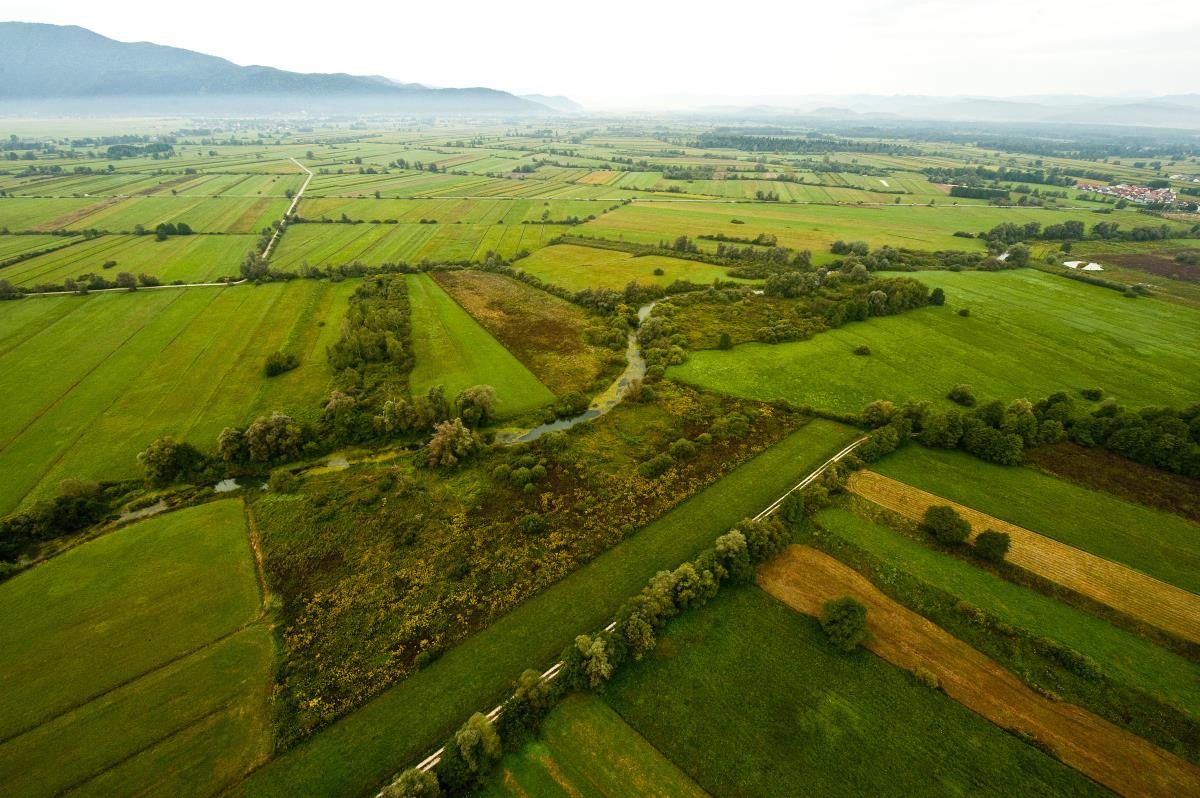LJUBLJANSKO BARJE NATURE PARK
Category of protection: Landscape park(IUCN: V), Natura 2000
Year of protection: 2008
Location
Ljubljansko barje Nature Park is located in the area of Ljubljansko barje (Ljubljana Marsh), in Central Slovenia, in the southernmost part of the Ljubljana Basin, no more than a few steps from Ljubljana's last suburban streets. The Park stretches from a natural passage, called the Ljubljana gate, between the hills of Golovec, Grad and Šišenski hrib in the north and north-east, to the Polhov Gradec hills in the north-west and west. In the south it borders on the Krim range and Menišija, and in the south-west it is flanked by the Dolenjsko podolje region.
History
Area of Ljubljansko barje has been recognized as an area of exceptional natural and cultural heritage only in the last few decades. It belongs to the European list of protected areas Natura 2000. In 2008 it was declared a Landscape park; whose main task is the conservation of natural values as well as biodiversity and landscape diversity of the Ljubljansko barje. From 2011 two groups of prehistoric pile dwellings on Ljubljansko barje are on the UNESCO list of World Heritage Sites.
The Park was founded with the Decree on the Ljubljana Marsh Nature Park (Official Gazette of RS, No. 12/08), and its managing body, Ljubljana Marsh Nature Park Public Institute, was established by a decision of the Government of the Republic of Slovenia (Official Gazette of RS, No. 55/2009).
The Park was founded with the Decree on the Ljubljana Marsh Nature Park (Official Gazette of RS, No. 12/08), and its managing body, Ljubljana Marsh Nature Park Public Institute, was established by a decision of the Government of the Republic of Slovenia (Official Gazette of RS, No. 55/2009).
Tourism
The best, and most environmentally friendly way to explore the Park is on foot, by bike, or by a rowing boat, kayak or canoe. You can also come by train or hop on one of the city buses that connect most of the towns and villages within the Park. We advise you to start your visit at one of the Park's nature trails: Bevke Nature Trail, the Iška River Nature Trail or Corncrake Nature Trail.
Natural values
This exceptional area of nature contains a large number of valuable natural features (59), natural monuments (9), nature reserves (6), numerous endangered wildlife plant and animal (27) species with an international protection status, their habitats and habitat types (7), as well as many cultural values and a unique mosaic landscape, the product of long-term interaction between man and nature.
Sights
Ljubljanica, The River of Seven Names and its three major groups of springs - Močilnik, Retovje and Bistra.
Iški vintgar Gorge is a scenic gorge of the Iška river.
Mali Plac/Mali Blatec is one of the few remains of a raised bog in Ljubljana Marsh.
Bistra Castle is cultural monument of national importance and the place of the Technical Museum of Slovenia.
Church of St. Michael in Črna Vas, also known as the Plečnik’s church is one of architect Jože Plečnik's most original creations.
Remains of Borovnica Viaduct which spanned the Borovnica Valley along the route from Vienna to Trieste via Ljubljana and was, during its construction, the largest stone bridge in Europe.
Iški vintgar Gorge is a scenic gorge of the Iška river.
Mali Plac/Mali Blatec is one of the few remains of a raised bog in Ljubljana Marsh.
Bistra Castle is cultural monument of national importance and the place of the Technical Museum of Slovenia.
Church of St. Michael in Črna Vas, also known as the Plečnik’s church is one of architect Jože Plečnik's most original creations.
Remains of Borovnica Viaduct which spanned the Borovnica Valley along the route from Vienna to Trieste via Ljubljana and was, during its construction, the largest stone bridge in Europe.
Known about the unknown
The landscape of Ljubljansko barje, the Ljubljana Marsh, is the result of thousands of years of human activity and intervention.
The first settlers of the present-day Ljubljansko barje were pile dwellers.
The first human interventions into the central marsh areas date back to the Roman period.
Intense peat extraction lowered the surface of Ljubljansko barje considerably, and devastating flooding returned to the area.
Ljubljansko barje is not only important for animals and plants. It is a natural reservoir of excess (flood) water, nature’s cooling and cleaning device, and a treasure chest of rich cultural heritage.
The first settlers of the present-day Ljubljansko barje were pile dwellers.
The first human interventions into the central marsh areas date back to the Roman period.
Intense peat extraction lowered the surface of Ljubljansko barje considerably, and devastating flooding returned to the area.
Ljubljansko barje is not only important for animals and plants. It is a natural reservoir of excess (flood) water, nature’s cooling and cleaning device, and a treasure chest of rich cultural heritage.
The area is open for visitors:
- Working hours (for visitors): All the time
- Prior notice: No, except for guided tours (available for organised groups)
- Additional important information:
This area is managed by Public institution Ljubljansko barje
- Address: Podpeška cesta 380, 1357 Notranje Gorice, Slovenia
- Telephone number: +386 (0)8 20 52 350
- Official website: http://www.ljubljanskobarje.si/
- Social networks: https://www.facebook.com/KPLjubljanskobarje/









